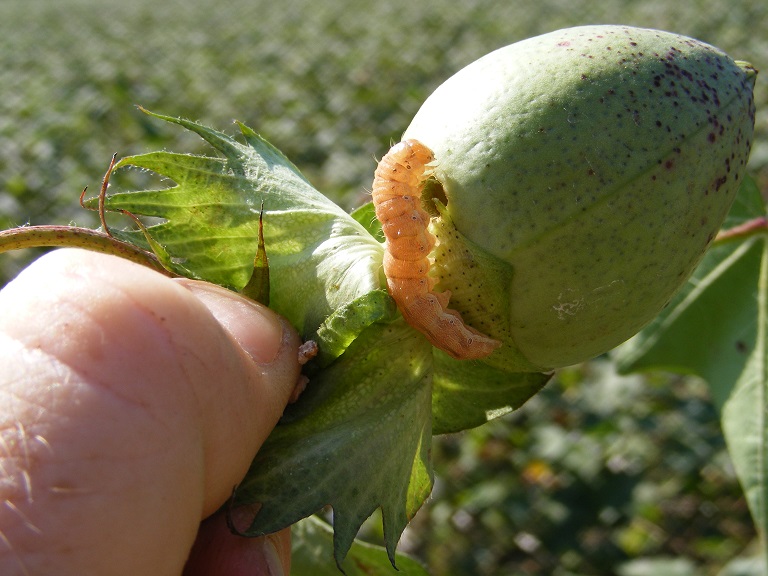Corn earworm moth activity is up from last week. We are definitely at the front edge of the movement from corn, which is typically our biggest flight each summer. We are continually testing moths for tolerance to pyrethroids and have included the updated line graph showing percent survivorship to date in our AVT program. Although bouncing a bit, to date we have tested 371 moths with an overall 31% survival rate. This level of survivorship is pretty consistent with what we have been seeing over the past few years and warrants some consideration when selecting your insecticide.
SOYBEAN: Worms are just beginning to show up in a few soybean fields, although numbers are very low, well below threshold. Fields in the R5-R6 stage should be scouted over the next few weeks. Use the recently revised Corn Earworm Calculator (…) to determine if your fields are at threshold.
COTTON: We found corn earworm (=bollworm) eggs in some fields in this area at what was the ‘old’ pre-Bt cotton threshold towards the end of last week. In those pre-Bt cotton days, this egg threshold was used to time the first of a two-spray system: at egg threshold and again in 5-7 days. Of course this system was supplanted by the advent of Bt cotton varieties. With our current dual-insect-trait cotton varieties, as a standard program we have recommended treating fields 1) if 3% of a random sample of bolls shows either live worms or fresh worm damage, or 2) if not scouted, 7 days after the ‘old’ egg threshold has been found in yours or nearby fields.
We have recommended this single application to dual-insect-trait cotton for several years now based on ongoing field trials that show that leaving cotton untreated can often result in levels of boll damage that exceed the 3% threshold. The amount of this ‘slippage’ of the Bt traits varies a lot from year to year depending on the level on bollworm pressure. In years with high populations, we have seen as much as 9-10% boll damage in some varieties (if not treated). Last year was just the opposite. We had a VERY lackluster bollworm infestation and most varieties stayed at less than 3% damage even without an insecticide spray.
This year is still a bit iffy in terms of what we can expect. As mentioned above, the moth flight is increasing, but is still low compared to some years. If you do make an application for bollworm, with the level of pyrethroid survivorship we are seeing, you should consider using a non-pyrethroid like Belt, Prevathon, or Blackhawk, and be sure to include a product like Bifenthrin or Bidrin that targets any lingering stink infestations. Besiege is another good choice since it contains both a non-pyrethroid and Karate. These are just few of the labeled options, and as always, check labels for rates and use information.


